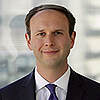Applying factor insights to build a better hedge fund portfolio
Having identified the factors that can potentially fill fixed income roles in specific rate environments, we analyzed the four main hedge fund strategy groups — Equity Hedge, Macro, Relative Value, Event Driven — to identify common factor profiles of funds within each group. Our high-level conclusion was that three of the four hedge fund strategy groups had relatively similar behavioral profiles, albeit with large differences in the proportion of managers with significant factor tilts. Specifically, a meaningful number of managers across Equity Hedge, Relative Value, and Event Driven strategies had long exposure to Risk Seeking factors and/or Mean Reversion factors, with some having short exposure to Risk Aversion factors as well.
We think this emphasizes the need to not be overly reliant on top-down strategy group allocations when assembling a portfolio of hedge funds. Instead, we see a case for focusing first on mapping the roles of individual hedge funds to key portfolio objectives. We think this can help mitigate the risk of having a portfolio that appears well diversified on the surface but fails to deliver a consistent profile across different market environments.
In our recent paper, “Can hedge funds behave if fixed income doesn’t? A manager-selection view”, we provide a detailed case study of how this can work in practice, including profiles of hypothetical portfolios of hedge funds designed for different interest-rate environments (Figure 2) — an illustration of the potential benefits of using a role- and behavior-based approach to increase alignment between manager research, the investment process, and portfolio objectives.















